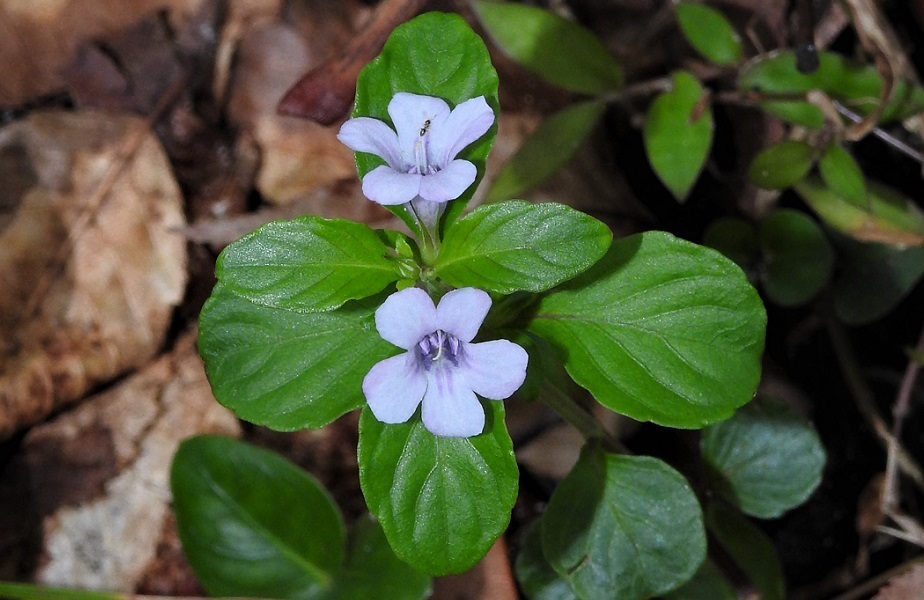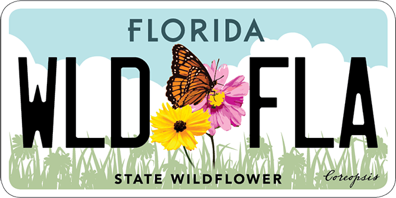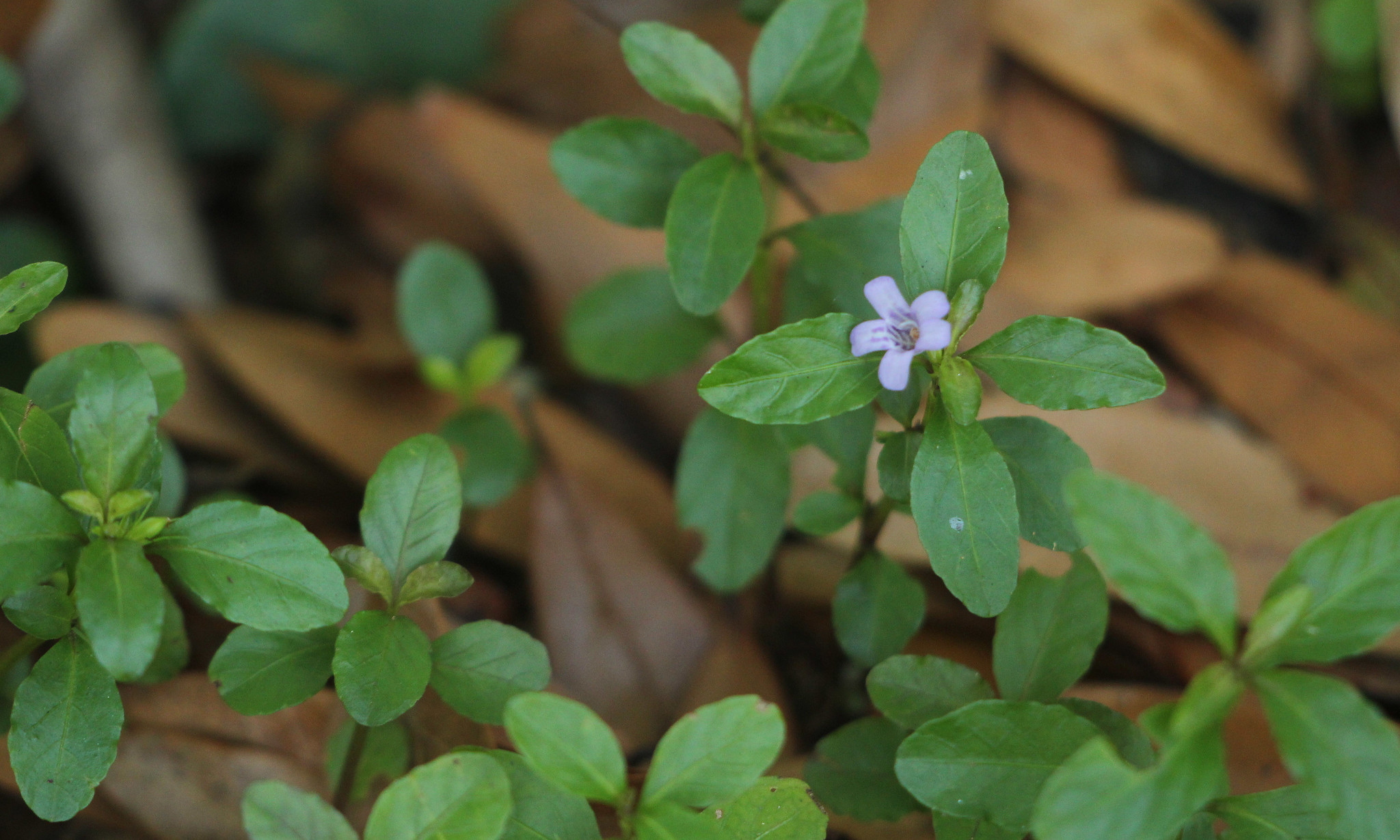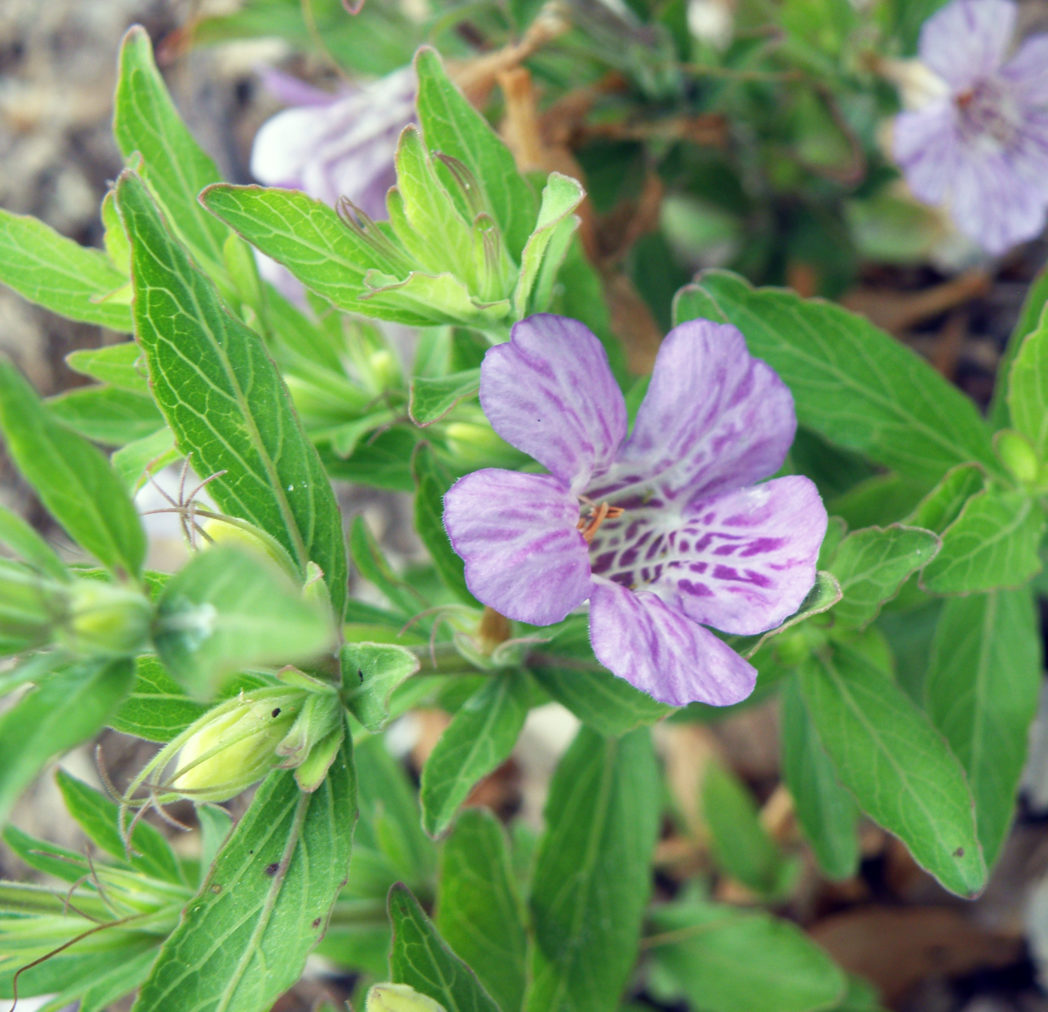Swamp twinflower
Pictured above: Swamp twinflower (Dyschoriste humistrata) by Mary Keim. Click on terms for botanical definitions. View post as a PDF.
Swamp twinflower (Dyschoriste humistrata) is a low-growing wildflower that occurs naturally along the edges of forested wetlands. Its petite lavender flowers bloom spring through early summer, attracting bees and small butterflies. It is also a larval host plant for the Common buckeye (Junonia coenia). Swamp twinflower is a great groundcover option for a moist to wet shady area.

Photo by Mark Kenderdine CC BY-NC
Swamp twinflower has small flowers that are light purple and funnel-shaped, with five lobed petals. The lower petals bear dark marks or streaks that extend into the throat. The deep green leaves are ovoid, oppositely arranged and succulent-like in appearance. Although in habit it only reaches about a foot high, its decumbent stems can be about 4 feet long and will root in various places where they touch the soil. Fruits are capsules that, when mature, dry and split open, dispersing the seeds. Swamp twinflower is deciduous.
The common name “twinflower” refers to its flowers being born in pairs (“twins”) atop the stems.
Family: Acanthaceae (Acanthus family)
Native range: North Florida west to Liberty County and into western Central Florida to DeSoto County
To see where natural populations of Swamp twinflower have been vouchered, visit florida.plantatlas.usf.edu.
Lifespan: Perennial
Soil: Moist to wet, well-drained sandy or limestone soils
Exposure: Full sun to shade
Growth habit: 4-12 inches tall
Propagation: Seed, division
Florida regions of landscape suitability: North, Central
Garden tips: Swamp twinflower makes an excellent groundcover and turf replacement in moist to wet soils and does very well in shady well-drained soils. It also adapts to seasonally dry conditions.
Swamp twinflower is available from nurseries that specialize in Florida native plants. Visit www.PlantRealFlorida.org to find a nursery in your area.
Learn more about Swamp twinflower from the Florida Native Plant Society and the Institute for Regional Conservation.
For information on other Dyschoriste species, see these resources:


